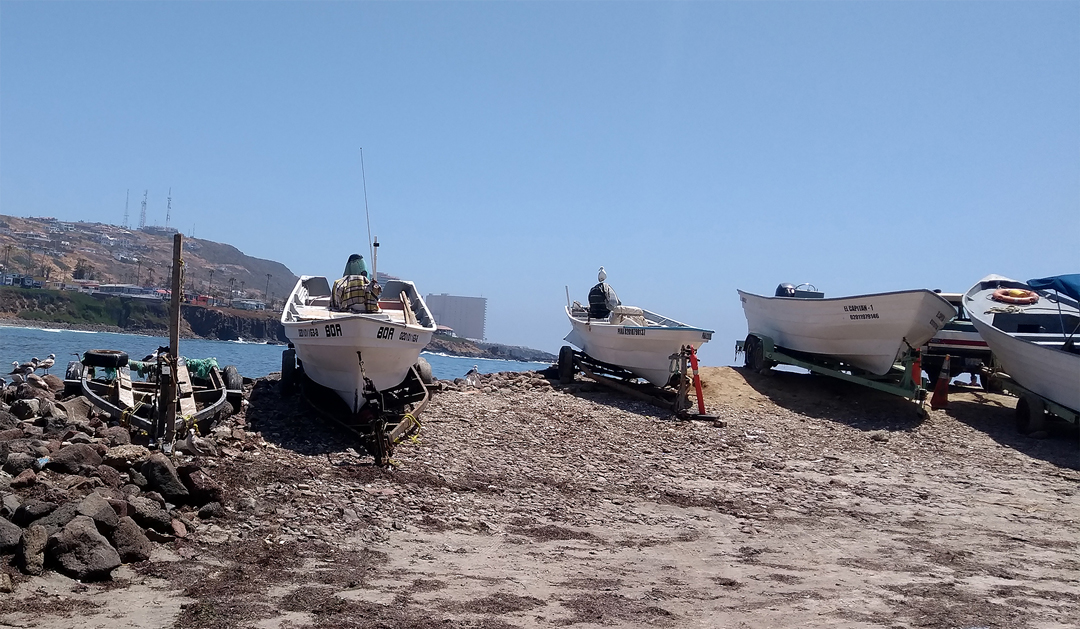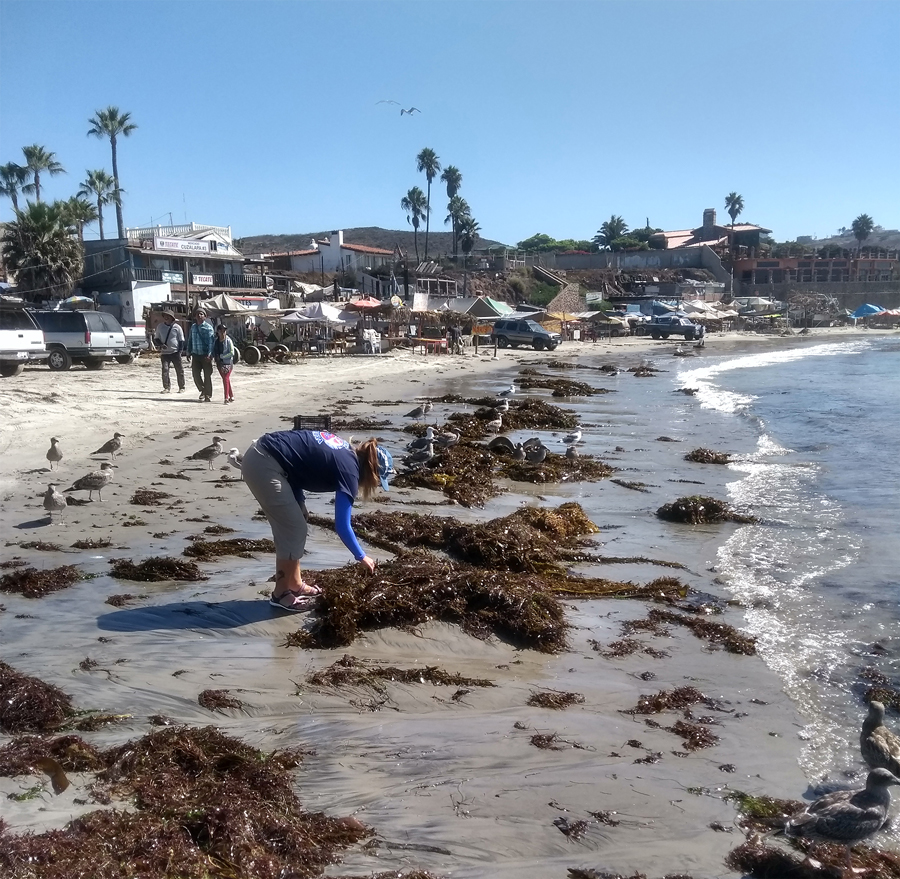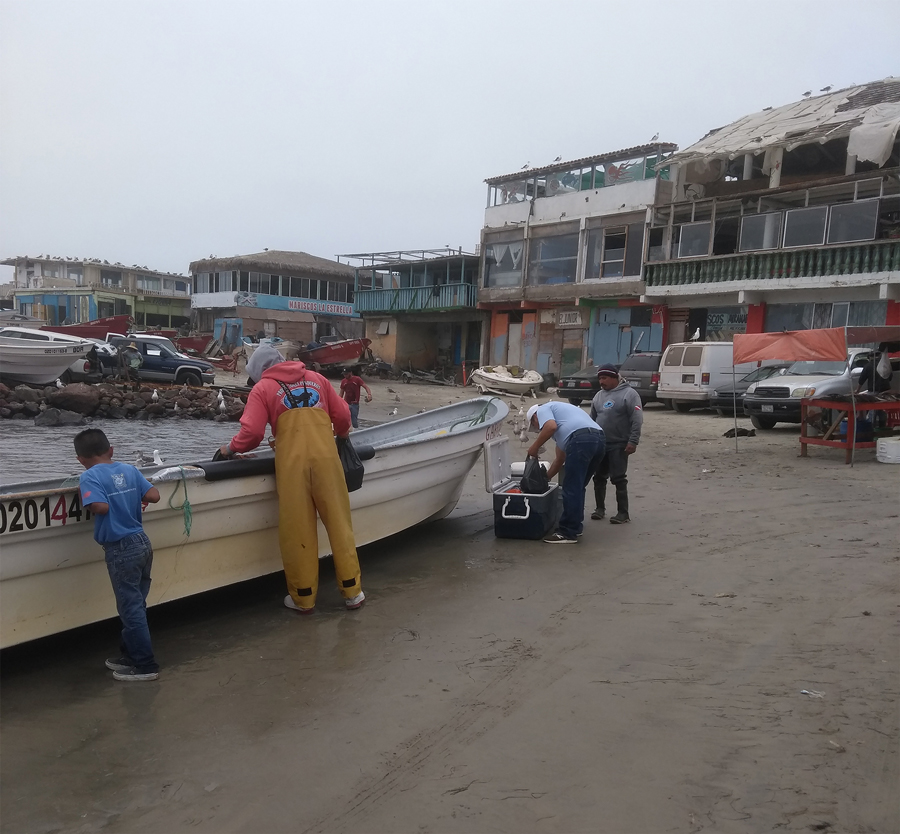What the tide brought in? A description of artisanal fishing surveys
Have you ever wondered what it’s like to do fisheries surveys on the beach? For many marine and fishing biologists, especially in my country this is our primary fieldwork as in the case for our project funded by Save Our Seas Foundation. But first, let me put some context. In Mexico, the small-scale, or artisanal fishery is carried out with boats of less than 10 meters long, commonly known as “pangas.” Usually, these pangas arrive at the beach to land the catch of the day. Many landing sites at the Baja California Peninsula are remote beaches, without infrastructure like electricity, ports, etc.; hence the fishermen load the catch in pickups and take the catch to sell a group of retailers, which will sell the catch to the final consumer. And, as soon the pangas arrive at the beach, and before fishers leave with the catch to sell it, we have an opportunity to do a survey and observe and record the catch.

Artisanal fishery small vessels, commonly known in Mexico as "Pangas." Photo © Luz Erandi Saldaña-Ruiz
In the peculiar case of our study site, Popotla, Baja California, Mexico, the fisher sells the catch as soon they arrive at the beach, and we have less time to do the survey, but still, we have a chance. The survey at the beach starts with the planning days before the field trip to organize the expenses, the students and volunteers that will be participating, to check the weather conditions, and the organization of all the field material. Observation is always key in our daily basis as scientists. In this case, as soon as we arrive at the landing site, we observe the pickups with boat trailers, to estimate how many pangas went fishing. From this moment the “waiting stage” begins, when we wait for the pangas to arrive at the beach. We use this time to walk on the beach searching for chondrichthyans egg cases, to take a snack, chat with the students and volunteers, to read or reflect on life if you are feeling philosophical. This waiting stage is accompanied by the excitement of the expectation of what we will see when the pangas arrive, like a child opening a present, and is a fantastic feeling.

Chimaeras egg case hunt at the Popotla, Baja California Mexico beach. Photo © Emiliano Gracia-Rodriguez
As soon a panga arrives, we approach and introduce ourselves and the project briefly. Then we ask the fishers about the catch, species and fishing sites. If cartilaginous fishes are part of the catch, we ask permission to fishers to measure some specimens, to take photos and we ask for more information about the fishing sites, type of gear used, etc. To be polite and ask for permission to the fishers to do the survey is the first important step to build good relations with the fishers. Also, the courtesy of explaining why we are doing the study is essential, helps fishers to be kind, cooperative, and, in many cases, they are very interested and engaged with our work and studies. We have to do the survey fast (taking measurements, photos, and data collection) because fishers work under extreme sun and heat, wind, or strong waves, and they are tired, but they give us some time; hence, one way to thank for the time they give us is to do our survey quickly. Also, we ask the fishers for information as if we were having a casual conversation. This chat facilitates communication, encourages them to provide us more details, and reinforces the good relationship with them.

The fishery survey starts as soon as pangas arrive at the beach. Photo © Luz Erandi Saldaña-Ruiz
As I mentioned before, observation is the key to do this kind of survey. We observe everything around in the study site, to the horizon to detect pangas approaching, for fast identification of the species caught, to identify the fishing gear, etc. For all the above, having a journal, besides the survey formats, to make extra annotations of the survey is fundamental. At the end of a survey day, the team and I are exhausted, covered in sand, sweat, and smelling fishy, but we are smiling and happy for the opportunity to do this project and contribute to the knowledge of cartilaginous fishes and their fishery in Mexico.
